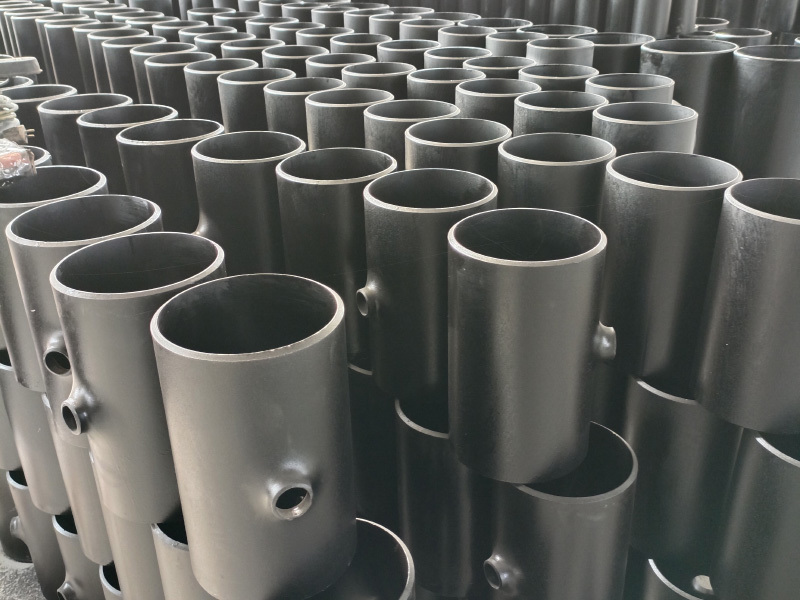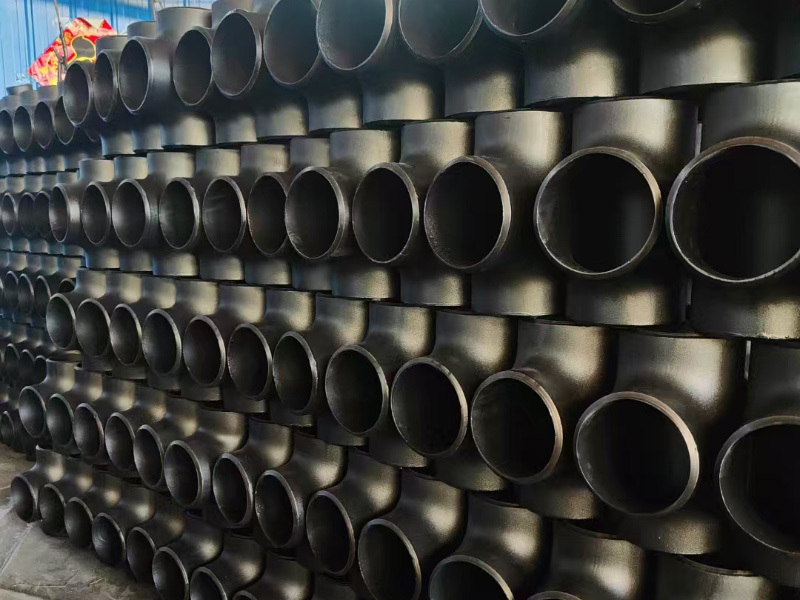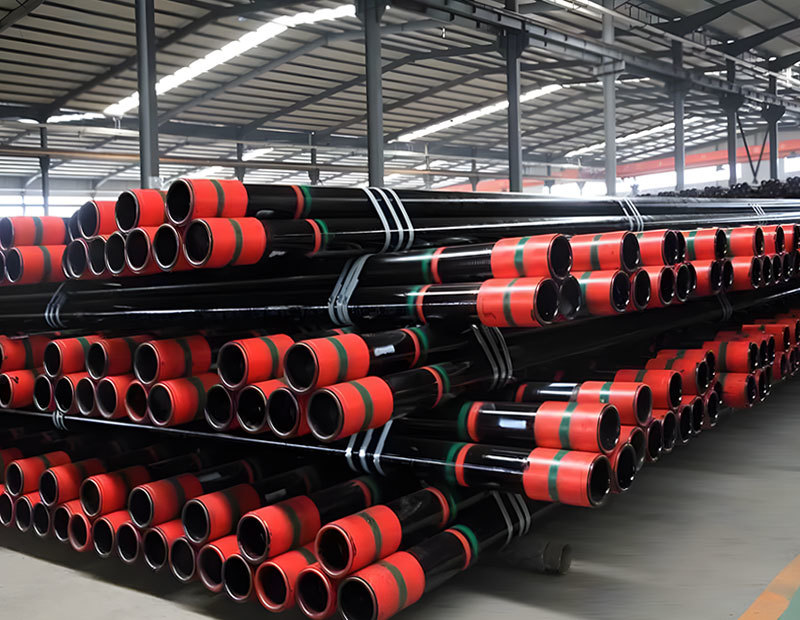Leading Smls Pipe and fittings supplier from China since 1991
Choosing the Right SMLS Pipe for Your Industrial Needs: An In-Depth Guide
Choosing the Right SMLS Pipe for Your Industrial Needs In the realm of metallurgical mining and energy, the decision to select the right SMLS (Seamless) pipe is pivotal. These pipes serve a multitude of applications across various industries, including oil and gas, construction, and manufacturing. Understanding the nuances of SMLS pipes, their specifications, and how they align with your requireme
Jun 03,2025

Choosing the Right SMLS Pipe for Your Industrial Needs
In the realm of metallurgical mining and energy, the decision to select the right SMLS (Seamless) pipe is pivotal. These pipes serve a multitude of applications across various industries, including oil and gas, construction, and manufacturing. Understanding the nuances of SMLS pipes, their specifications, and how they align with your requirements can significantly influence the efficiency and safety of your operations. In this extensive guide, we delve into the vital considerations for selecting the right SMLS pipe for your industrial needs.
Table of Contents
1. Understanding SMLS Pipes: Definition and Characteristics
2. Advantages of Using SMLS Pipes in Industrial Applications
3. Material Options for SMLS Pipes: Choosing the Right Alloy
4. Sizing and Dimensions: Finding the Perfect Fit
5. The Manufacturing Process of SMLS Pipes
6. Applications of SMLS Pipes in Different Industries
7. Common Issues with SMLS Pipes and Their Solutions
8. FAQs: Frequently Asked Questions about SMLS Pipes
9. Conclusion: Making the Right Choice for Your SMLS Pipe Needs
Understanding SMLS Pipes: Definition and Characteristics
SMLS pipes are crafted without seams or welds, resulting in a strong and durable product. The seamless nature of these pipes provides several benefits, including enhanced strength and resistance to pressure and corrosion. **SMLS pipes** are typically manufactured from various materials, including carbon steel, alloy steel, and stainless steel, making them versatile for many applications.
Additionally, the absence of seams minimizes the probability of leaks, ensuring a safer operation environment. This characteristic makes SMLS pipes particularly valuable in high-pressure applications, where reliability is critical.
Advantages of Using SMLS Pipes in Industrial Applications
When considering SMLS pipes for your industrial needs, several advantages stand out:
1. Superior Strength and Durability
The seamless construction of SMLS pipes provides greater tensile strength and durability compared to welded pipes. This increased strength is essential in various demanding applications where pressure and temperature fluctuations can occur.
2. Enhanced Corrosion Resistance
SMLS pipes can be produced from materials specifically designed to resist corrosion, making them ideal for industries such as oil and gas, where exposure to harsh environments is prevalent.
3. Improved Flow Characteristics
The absence of seams in SMLS pipes ensures a smooth internal surface, promoting better fluid flow and reducing the risk of turbulence. This feature can lead to enhanced efficiency in transport systems.
4. Reduced Maintenance Costs
The durability and integrity of SMLS pipes reduce the likelihood of failures, leading to lower maintenance costs over time. Investing in high-quality SMLS pipes can ultimately save money in operational costs.
Material Options for SMLS Pipes: Choosing the Right Alloy
Selecting the appropriate material for your SMLS pipes is crucial. The most common materials used include:
1. Carbon Steel
Carbon steel SMLS pipes are well-known for their strength and affordability. They are commonly used in applications where high pressure and temperature are involved.
2. Alloy Steel
Alloy steel pipes offer enhanced resistance to corrosion and are suitable for high-pressure applications. The addition of elements like chromium and nickel improves their mechanical properties.
3. Stainless Steel
Stainless steel SMLS pipes are ideal for environments where corrosion resistance is paramount. They are commonly used in chemical processing and food manufacturing industries.
Sizing and Dimensions: Finding the Perfect Fit
When selecting SMLS pipes, proper sizing is essential for optimal performance. Key considerations include:
1. Pipe Diameter
Determine the appropriate outer diameter (OD) and inner diameter (ID) for your application. This decision influences flow rates and compatibility with fittings.
2. Wall Thickness
Choosing the correct wall thickness is vital for withstanding internal pressure. Thicker walls are necessary for high-pressure applications but may add weight and cost.
3. Length
SMLS pipes are available in various lengths. Determine the required lengths based on your project specifications and installation requirements.
The Manufacturing Process of SMLS Pipes
Understanding the manufacturing process can provide insight into the quality and characteristics of SMLS pipes. The primary methods for producing SMLS pipes include:
1. Hot Finishing
In this process, a solid round steel billet is heated and pierced to create a hollow tube. The tube is then elongated and finished to the desired dimensions.
2. Cold Finishing
Cold finishing involves further processing of hot-finished pipes to enhance dimensional precision and surface quality. This method is suitable for specific high-tolerance applications.
Applications of SMLS Pipes in Different Industries
SMLS pipes find extensive applications across a variety of industries:
1. Oil and Gas Industry
In this sector, SMLS pipes are crucial for transporting crude oil, natural gas, and other fluids under high pressure. Their strength and durability make them ideal for pipelines.
2. Construction and Infrastructure
SMLS pipes are frequently used in construction projects for structural support and fluid transport. Their reliability ensures safety and longevity in infrastructure.
3. Chemical Processing
Due to their corrosion resistance, SMLS pipes are a preferred choice for transporting chemicals and other corrosive materials, minimizing the risk of leaks and failures.
4. Power Generation
In power plants, SMLS pipes are utilized in various applications, including steam lines and boilers, where high pressure and temperature conditions exist.
Common Issues with SMLS Pipes and Their Solutions
While SMLS pipes are highly durable, certain challenges may arise:
1. Corrosion
Even the best materials can corrode over time. Implementing regular inspections and using corrosion-resistant coatings can mitigate this issue.
2. Installation Errors
Improper installation can lead to failures. Ensuring that qualified professionals handle the installation process can prevent potential issues.
3. Material Defects
Occasionally, material defects may occur during manufacturing. Sourcing pipes from reputable manufacturers and conducting quality checks can help ensure reliability.
FAQs: Frequently Asked Questions about SMLS Pipes
1. What is the difference between SMLS and welded pipes?
SMLS pipes are made from a single piece of material without seams, while welded pipes are formed by joining two pieces together. This difference affects strength and reliability.
2. How do I determine the correct size for my SMLS pipe?
To determine the correct size, consider the required flow rate, pressure, and compatibility with existing systems. Consulting with a specialist can provide clarity.
3. Can SMLS pipes be used in high-temperature applications?
Yes, SMLS pipes can be manufactured from materials designed for high-temperature applications, making them suitable for various industrial uses.
4. What is the typical lifespan of SMLS pipes?
The lifespan of SMLS pipes varies based on material, application, and environmental factors. Proper maintenance can significantly extend their service life.
5. Are SMLS pipes more expensive than welded pipes?
Generally, SMLS pipes are more expensive due to their manufacturing process. However, their durability and lower maintenance costs can offset the initial investment over time.
Conclusion: Making the Right Choice for Your SMLS Pipe Needs
In the complex landscape of industrial piping solutions, selecting the right SMLS pipe is crucial for optimal performance, safety, and cost-effectiveness. By understanding the characteristics, advantages, material options, sizing considerations, and manufacturing processes associated with SMLS pipes, you can make informed choices that align with your specific needs. Investing time in evaluating these factors can ultimately lead to enhanced operational efficiency and long-term success in your industrial endeavors.
Hot Tags:







